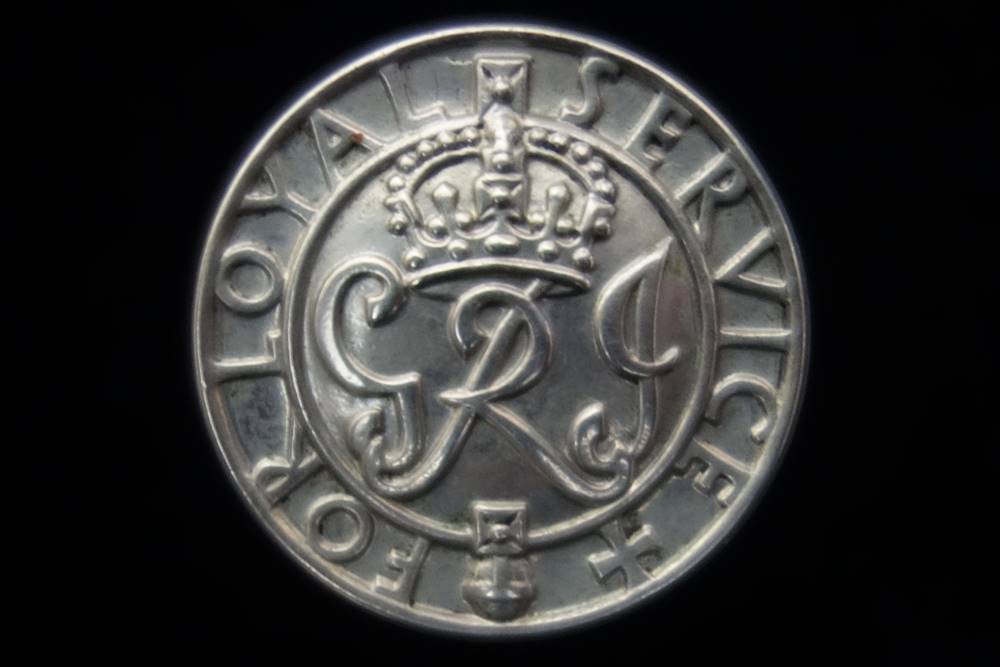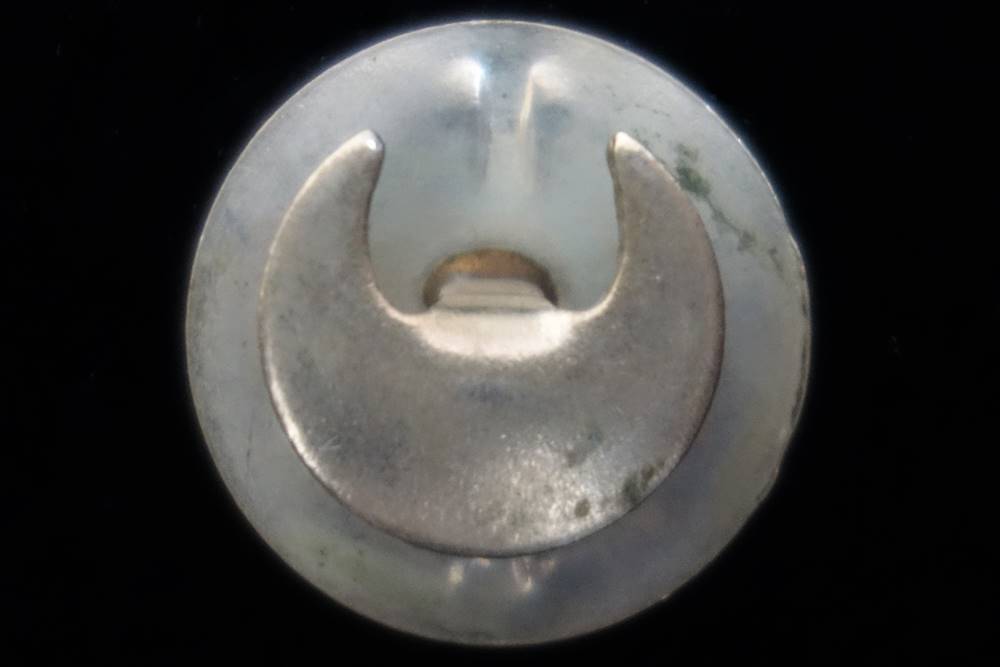This article looks at the King’s Badge, issued to those who were invalided from the armed forces, Merchant Navy, Home Guard or Civil Defence Organisations during the Second World War. I’ve also written a series of guides to help you research soldiers who served in the British Army during the Second World War:
I also offer a Second World War Soldier Research and Document Copying Service.
The King’s Badge

In May 1941, King George VI approved the issue of a King’s Badge, awarded to “those invalided from the naval, military, and air forces and the merchant navy and fishing fleet, through wounds or disablement attributable to service since September 3, 1939”. Later in the war, the award criteria was widened to include those invalided from the Home Guard and the Civil Defence Organisations. The King’s Badge was only issued to those who were invalided as a direct result of their war service which caused a lot of ill-feeling. In its 20 February 1942 edition, the Clitheroe Advertiser and Times reported:
Many correspondents in various parts of the country have complained to the Legion that after being invalided out of the Army they have been refused a “King’s Badge” to signify to all and sundry that they took up arms and that they have served their country. One such, who was discharged from hospital last May, and having ceased to fulfil Army physical requirements under paragraph 390 of the King’s Regulations, 1940, was refused a pension on the grounds that his gastric trouble was not attributable to his service…
When he applied for a King’s badge, the Ministry of Pensions informed him that “the issue of the King’s badge, to which you refer, it confined to personnel who have been invalided on account of a disability which had been certified as attributable to service in H.M. Forces since September 3rd, 1939. As these conditions are not fulfilled in your case, it is regretted that you are not entitled to receive one of the badges”. So that’s that!
The badge was automatically issued to those who qualified by the Ministry of Pensions and was worn on the lapel. Its First World War equivalent was the Silver War Badge. Unlike the Silver War Badge, the King’s Badge wasn’t numbered so there’s no way of linking one to a specific person. A King’s Badge was issued in a cardboard box, not much larger than the badge itself. On the obverse of the box, a label recorded:
Ministry of Pensions.
THE KING’S BADGE
Every precaution should be taken against loss, thus preventing the Badge falling into the hands of an unauthorized user.
Another version of the label also included as a final line “It will NOT be replaced if Lost.” which is often found crossed out. A letter was also included from the Ministry of Pensions, with the later version reading as follows:
The Ministry of Pensions is commanded by His Majesty the King to forward to you the King’s Badge for members of the Armed Forces, the Merchant Navy, the Home Guard and the Civil Defence Organisations who are disabled as a result of war service.
The first issues were made in October 1941 and by the end of the year, over 8,000 had been issued. By March 1942, over 25,000 had been issued.
Description of the King’s Badge
Obverse: The Royal and Imperial cypher (GRI) surmounted by a crown enclosed in a circular band. The words “FOR LOYAL SERVICE” appear in the band.
Reverse: Plain as shown below with a buttonhole attachment.
Size: 1″ (26 mm)
Metal: White metal.
Designer: Percy Metcalfe C.V.O. (1895-1970)

Are there Records for the King’s Badge?
Unfortunately, there are no records available for the King’s Badge. If you’re researching a soldier, you can see if they appear in the War Office casualty lists as many soldiers were invalided due to wounds. A soldier’s service record will often shed light on their medical history but it can be very patchy as the Ministry of Defence and the National Archives doesn’t currently release most medical documents. However, the dates a soldier was under medical treatment and where they were treated often appear.
